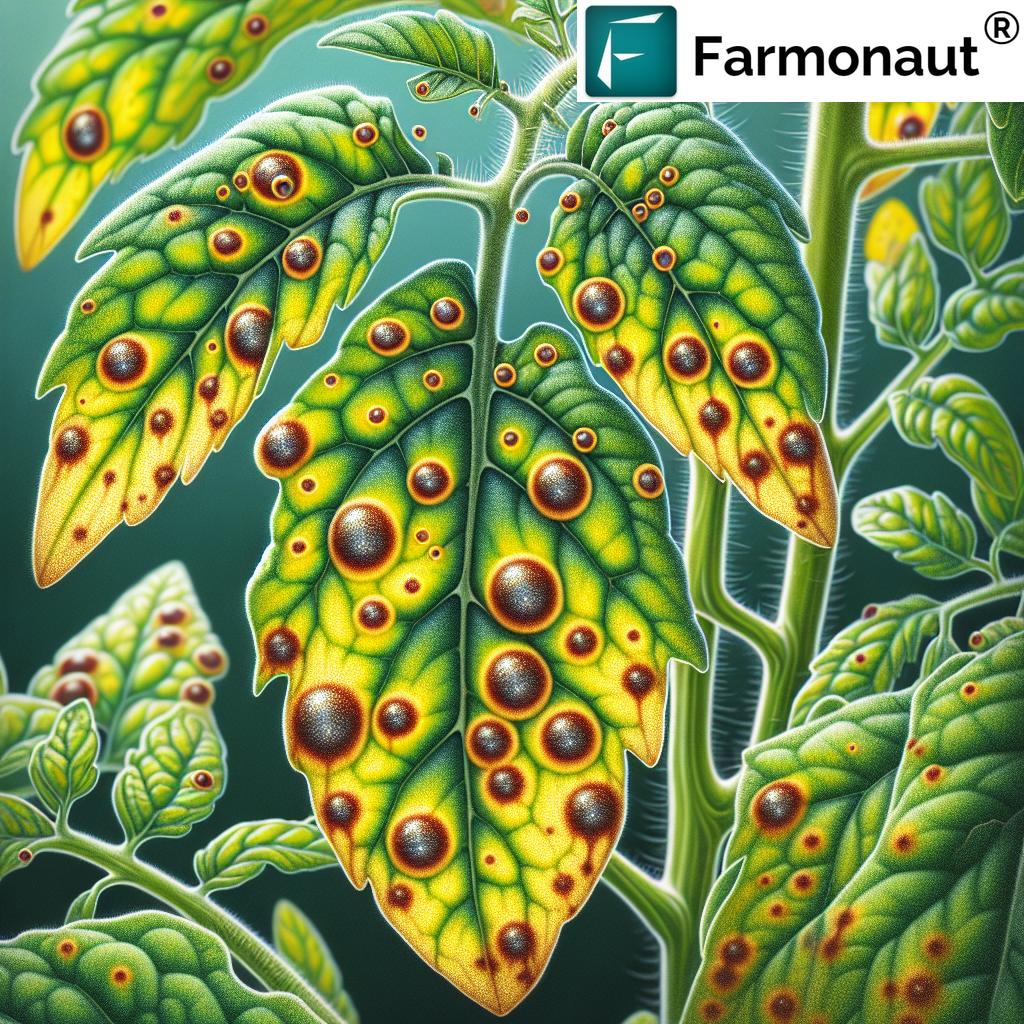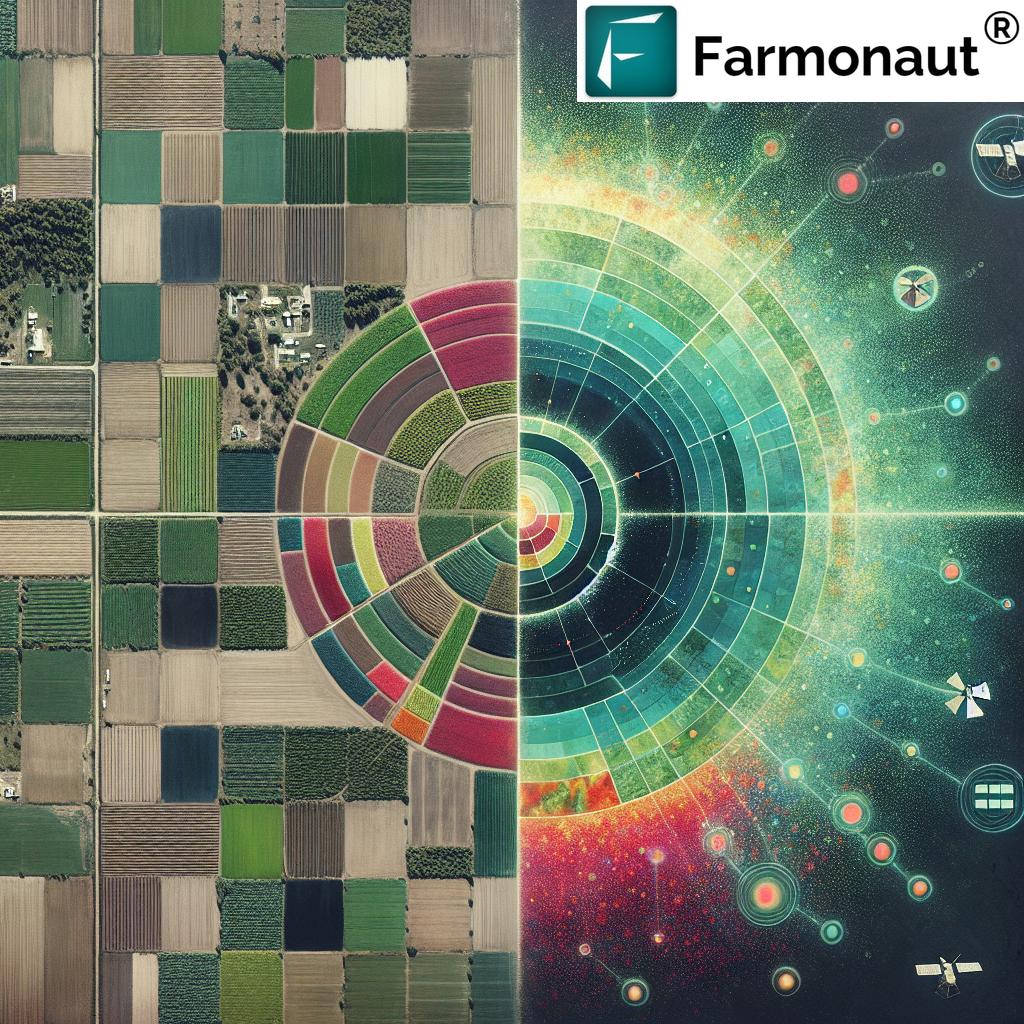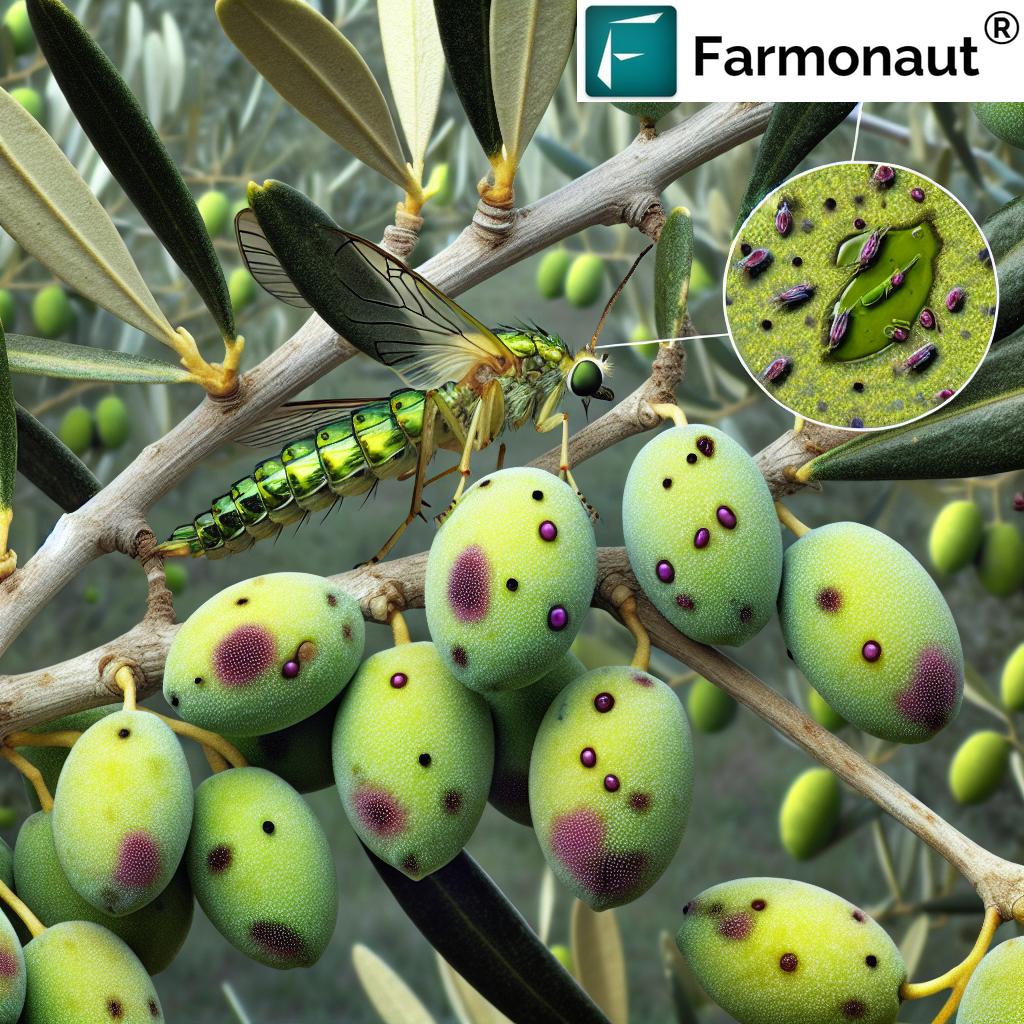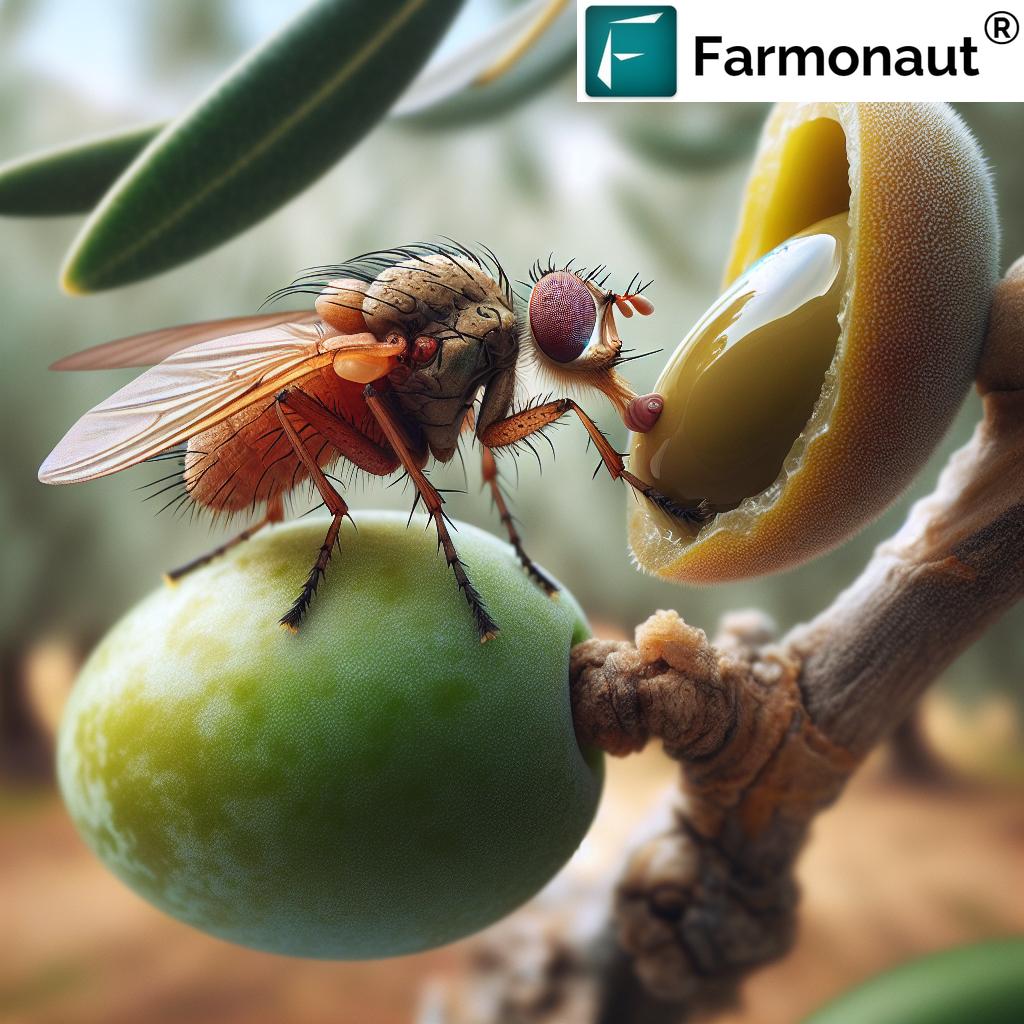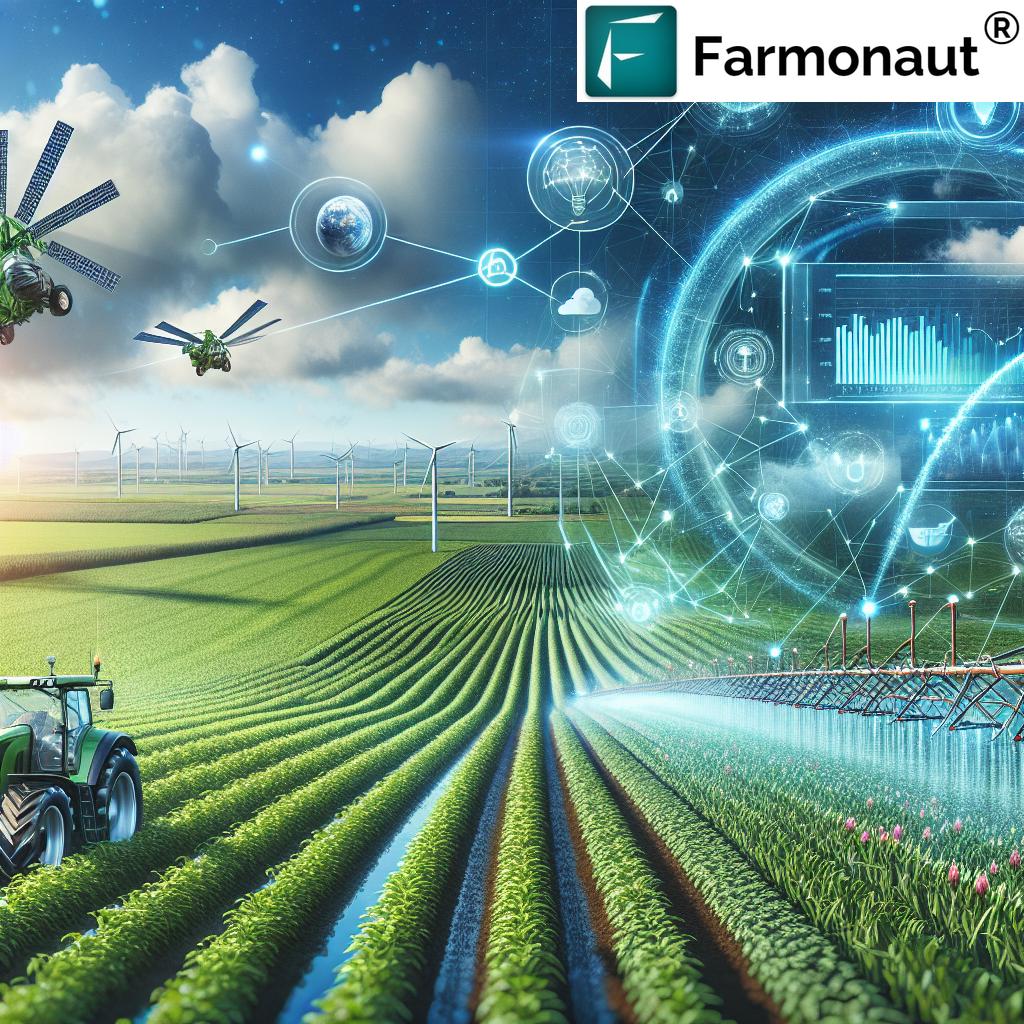Maximizing Yields: Essential Guide to Managing a Thriving Cotton Plant Farm

Welcome to our comprehensive guide on managing a cotton farm! As experts in agricultural technology and precision farming, we at Farmonaut are excited to share our knowledge and insights to help you maximize yields and efficiency in your cotton plant farm. In this extensive blog post, we’ll cover everything from planting to harvesting, incorporating cutting-edge technologies and sustainable practices to ensure your success in cotton cultivation.
Table of Contents
- Introduction to Cotton Farming
- Preparing the Soil for Cotton Planting
- Selecting the Right Cotton Varieties
- Planting Techniques for Optimal Growth
- Irrigation Strategies for Cotton
- Nutrient Management in Cotton Cultivation
- Pest and Disease Control in Cotton Farms
- Harvesting and Post-Harvest Management
- Sustainable Practices in Cotton Farming
- Leveraging Technology in Cotton Farm Management
- Economic Considerations for Cotton Farmers
- Future Trends in Cotton Farming
- FAQ Section
1. Introduction to Cotton Farming
Cotton farming has been a cornerstone of agriculture for thousands of years, providing the world with one of the most versatile and essential fibers. Today, managing a cotton farm requires a blend of traditional knowledge and modern technologies to meet the growing global demand while maintaining sustainability.
At Farmonaut, we understand the complexities of cotton cultivation and the challenges faced by farmers. Our satellite-based farm management solutions are designed to provide real-time insights and data-driven recommendations to optimize your cotton plant farm.
2. Preparing the Soil for Cotton Planting
The foundation of a successful cotton crop lies in proper soil preparation. Here are key steps to ensure your soil is ready for planting:
- Soil Testing: Conduct comprehensive soil tests to determine pH levels, nutrient content, and organic matter.
- pH Adjustment: Cotton thrives in soil with a pH between 6.0 and 6.5. Use lime or sulfur to adjust pH as needed.
- Tillage: Implement appropriate tillage practices to create a suitable seedbed and manage residue from previous crops.
- Nutrient Application: Based on soil test results, apply necessary nutrients before planting.
Farmonaut’s satellite imagery can help you identify soil variability across your fields, allowing for targeted soil management strategies.
3. Selecting the Right Cotton Varieties
Choosing the appropriate cotton variety is crucial for maximizing yields and quality. Consider the following factors:
- Climate Adaptation: Select varieties that are well-suited to your local climate conditions.
- Disease Resistance: Opt for varieties with resistance to prevalent diseases in your area.
- Fiber Quality: Consider market demands for specific fiber qualities.
- Yield Potential: Look for varieties with proven high yield potential in your region.
Our AI-powered advisory system, Jeevn AI, can provide personalized recommendations for cotton varieties based on your specific farm conditions and historical data.
4. Planting Techniques for Optimal Growth
Proper planting techniques are essential for establishing a healthy cotton crop. Here are key considerations:
- Planting Date: Time your planting to coincide with optimal soil temperatures and moisture conditions.
- Seed Depth: Plant seeds at a depth of 0.5 to 1.5 inches, depending on soil moisture.
- Row Spacing: Optimize row spacing based on your equipment and local recommendations.
- Seeding Rate: Adjust seeding rates based on soil conditions and desired plant population.
Farmonaut’s satellite monitoring can help you track emergence and early growth patterns across your fields, allowing for timely interventions if needed.
5. Irrigation Strategies for Cotton
Effective irrigation management is critical for cotton production, especially in water-stressed regions. Consider these strategies:
- Drip Irrigation: Implement efficient drip irrigation systems for precise water delivery.
- Deficit Irrigation: Apply controlled water stress at certain growth stages to improve water use efficiency.
- Soil Moisture Monitoring: Use soil moisture sensors or satellite-based soil moisture estimates to guide irrigation decisions.
- Timing: Focus on critical growth stages such as flowering and boll development for optimal water application.
Our satellite-based soil moisture monitoring can provide you with valuable insights for irrigation scheduling, helping you optimize water use across your cotton plant farm.
6. Nutrient Management in Cotton Cultivation
Proper nutrient management is essential for achieving high yields and quality in cotton production. Here’s a comprehensive approach:
- Nitrogen Management: Apply nitrogen in split doses, with emphasis on early season growth and flowering stages.
- Phosphorus and Potassium: Ensure adequate levels of these nutrients for root development and boll formation.
- Micronutrients: Address deficiencies in micronutrients like boron and zinc, which are crucial for cotton growth.
- Foliar Feeding: Consider foliar applications of nutrients during peak demand periods.
Farmonaut’s vegetation health indices (NDVI) can help you identify areas of nutrient stress in your cotton fields, allowing for targeted fertilizer applications.
7. Pest and Disease Control in Cotton Farms
Effective pest and disease management is crucial for protecting your cotton crop and ensuring high yields. Here are key strategies:
- Integrated Pest Management (IPM): Implement a comprehensive IPM program that combines cultural, biological, and chemical control methods.
- Scouting: Regularly monitor your fields for signs of pest infestation or disease outbreaks.
- Beneficial Insects: Encourage populations of beneficial insects that prey on cotton pests.
- Targeted Spraying: Use precision application techniques to minimize pesticide use and environmental impact.
Our satellite-based crop health monitoring can help you detect early signs of pest or disease stress, allowing for prompt and targeted interventions.
8. Harvesting and Post-Harvest Management
Proper harvesting and post-harvest handling are critical for maximizing the value of your cotton crop:
- Timing: Harvest when 60-70% of bolls are open and fiber moisture content is optimal.
- Defoliation: Apply defoliants at the right time to facilitate mechanical harvesting.
- Harvesting Equipment: Maintain and calibrate harvesting equipment for efficient operation.
- Storage: Ensure proper storage conditions to maintain fiber quality until ginning.
Farmonaut’s satellite imagery can help you track crop maturity across your fields, optimizing harvest timing and logistics.
9. Sustainable Practices in Cotton Farming
Implementing sustainable practices is essential for long-term success in cotton farming:
- Conservation Tillage: Adopt reduced or no-till practices to improve soil health and reduce erosion.
- Cover Crops: Use cover crops to enhance soil fertility and reduce weed pressure.
- Precision Agriculture: Leverage technology for targeted input application and resource optimization.
- Water Conservation: Implement water-saving irrigation techniques and rainwater harvesting.
Our carbon footprinting feature can help you track and reduce your environmental impact, aligning your farm with sustainable agriculture goals.
10. Leveraging Technology in Cotton Farm Management
Modern cotton farming benefits greatly from technological advancements. Here’s how Farmonaut’s solutions can revolutionize your cotton plant farm management:
- Satellite-Based Crop Monitoring: Get real-time insights into crop health, growth patterns, and stress factors.
- AI-Powered Advisory: Receive personalized recommendations for crop management based on satellite data and local conditions.
- Weather Forecasting: Access accurate, field-specific weather forecasts to plan farm operations effectively.
- Resource Management: Optimize irrigation, fertilizer, and pesticide use with data-driven insights.
To experience the power of our satellite-based farm management system, visit Farmonaut’s Web App or download our mobile app for Android or iOS.
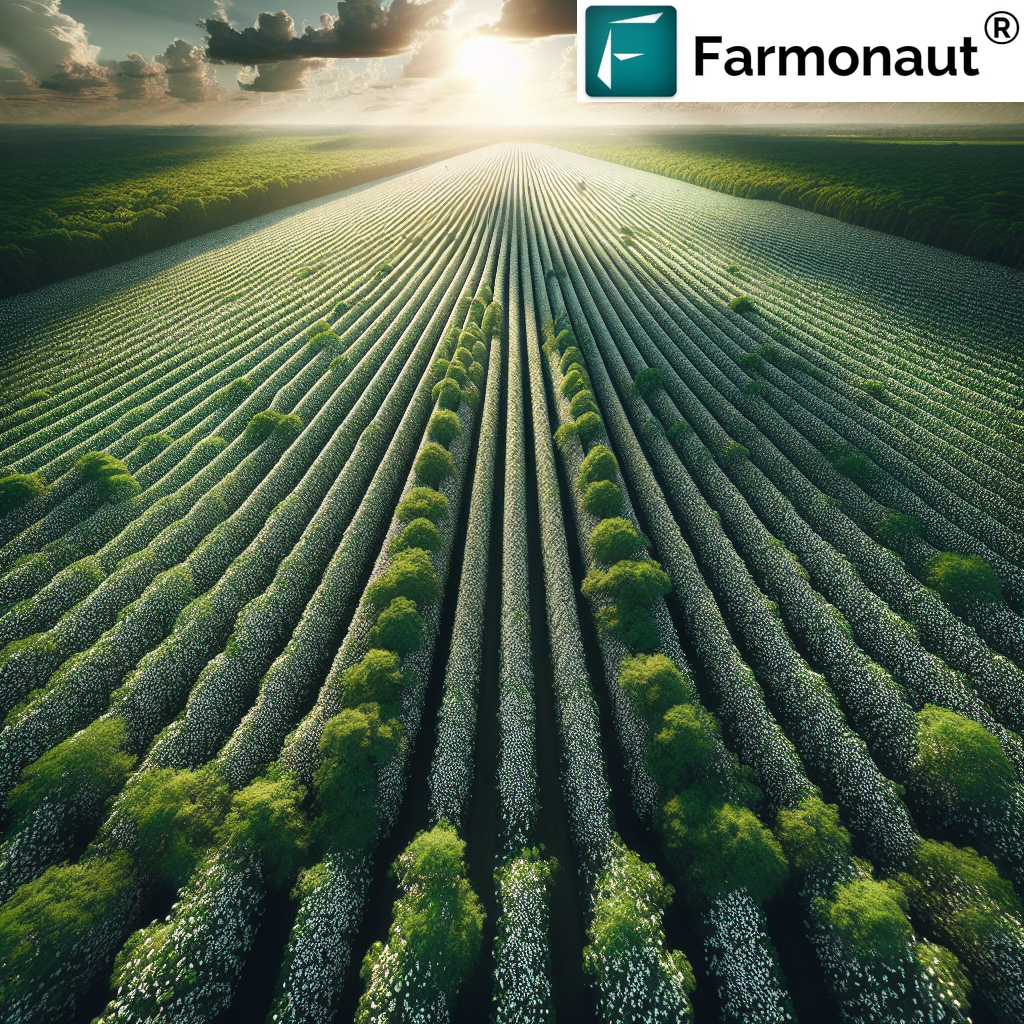
Comparison: Farmonaut Satellite System vs. Drone and IoT-based Farm Monitoring
| Feature | Farmonaut Satellite System | Drone-based Monitoring | IoT-based Monitoring |
|---|---|---|---|
| Coverage Area | Large scale (entire farms) | Limited by flight time and regulations | Limited by sensor placement |
| Frequency of Data Collection | Regular (every few days) | On-demand (requires manual flights) | Continuous |
| Initial Setup Cost | Low | High (drone purchase, training) | Medium to High (sensors, network) |
| Maintenance | Minimal | Regular (drone maintenance) | Regular (sensor maintenance, battery replacement) |
| Data Analysis | Advanced AI-powered analytics | Requires specialized software | Real-time but limited scope |
| Scalability | Highly scalable | Limited by operational constraints | Requires additional hardware for expansion |
11. Economic Considerations for Cotton Farmers
Understanding the economic aspects of cotton farming is crucial for long-term success. Consider these factors:
- Market Analysis: Stay informed about global cotton markets and price trends.
- Cost Management: Implement efficient practices to reduce production costs without compromising yield or quality.
- Value-Added Products: Explore opportunities for premium cotton varieties or organic production.
- Risk Management: Consider crop insurance and hedging strategies to mitigate financial risks.
Farmonaut’s platform can help you optimize resource use and reduce operational costs, improving your farm’s overall profitability.
12. Future Trends in Cotton Farming
Stay ahead of the curve by keeping an eye on these emerging trends in cotton cultivation:
- Gene Editing: Development of cotton varieties with enhanced traits through CRISPR and other gene-editing technologies.
- Robotics: Increasing use of autonomous machines for planting, weeding, and harvesting.
- AI and Machine Learning: Advanced predictive models for yield forecasting and pest management.
- Blockchain in Supply Chain: Enhanced traceability and transparency in cotton supply chains.
At Farmonaut, we’re continuously innovating to bring you the latest advancements in agricultural technology. Our blockchain-based traceability solutions are already helping cotton farmers connect directly with end-users, ensuring fair prices and transparency.
13. FAQ Section
Q1: How often should I monitor my cotton crop using satellite imagery?
A: We recommend monitoring your cotton in farm at least once a week using Farmonaut’s satellite imagery. This frequency allows you to track crop development, detect early signs of stress, and make timely management decisions.
Q2: Can Farmonaut’s system help me reduce water usage in my cotton farm?
A: Yes, our satellite-based soil moisture monitoring and AI-powered irrigation recommendations can help you optimize water use, potentially reducing water consumption by 20-30% while maintaining or improving yields.
Q3: How does Farmonaut’s technology compare to traditional scouting methods?
A: While traditional scouting remains valuable, Farmonaut’s satellite monitoring provides a comprehensive view of your entire cotton plant farm in real-time. This allows for more efficient resource allocation and quicker response to issues across large areas.
Q4: Is Farmonaut’s system suitable for small-scale cotton farmers?
A: Absolutely! Our system is designed to be scalable and affordable for farmers of all sizes. We offer flexible pricing tiers to accommodate different farm sizes and needs.
Q5: How can I integrate Farmonaut’s data with my existing farm management software?
A: Farmonaut offers API access, allowing seamless integration with many popular farm management systems. For more information, visit our API documentation.
In conclusion, managing a cotton farm successfully requires a combination of traditional knowledge, modern technology, and sustainable practices. By leveraging Farmonaut’s advanced satellite-based solutions, you can optimize every aspect of your cotton production, from planting to harvesting. Our comprehensive platform provides the insights and tools you need to maximize yields, reduce costs, and ensure the long-term sustainability of your cotton plant farm.
Ready to transform your cotton farming operations? Subscribe to Farmonaut today and experience the future of precision agriculture:
For more information on our satellite-based farm management solutions or to explore our API for developers, visit Farmonaut’s API Portal. Together, we can revolutionize cotton farming and create a more sustainable, productive future for agriculture.


